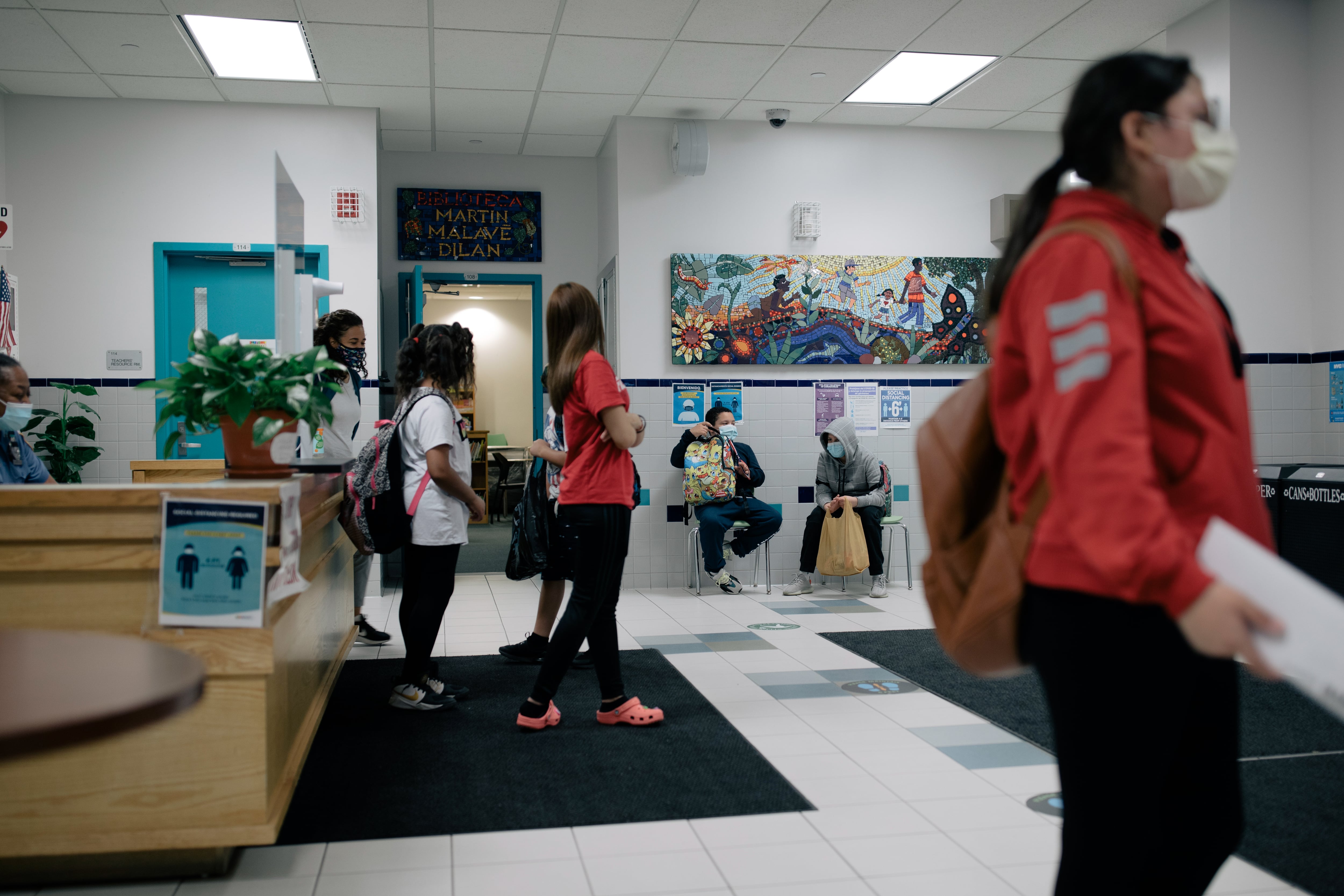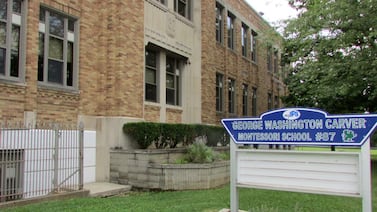New York City educators and families are finishing this school year worried about how hundreds of millions of dollars in cuts to school budgets will impact their classrooms in the fall. They’re hearing about rising class sizes, losing teachers, and cutting enrichment.
City lawmakers passed a budget deal earlier this month slashing school budgets based on declining enrollment projections: The city’s public schools (excluding charters) have lost 9.5% of their students since the pandemic began.
Mayor Eric Adams’ $215 million cut to schools was somewhat softened by federal coronavirus stimulus dollars. Without that federal funding, Adams would have cut budgets by $375 million, which he plans to do by the 2024-2025 school year.
Schools must typically return money if they enroll fewer students than projected midway through the school year. But Mayor Bill de Blasio held schools harmless from these cuts over the past two years, largely using COVID stimulus dollars. Adams’ plan reverses this policy and goes back to a funding system that’s more closely tied to enrollment.
To show how those cuts affect each school, Chalkbeat created a lookup tool examining changes to Fair Student Funding — the pot of money that makes up 65% of school budgets and is sent to schools months ahead of the next school year. It’s what principals use to hire staff and create programming. The formula provides more money to schools with higher shares of students with disabilities, those learning English as a new language and those struggling academically.
A majority of schools — just over 1,200 — will see cuts in Fair Student Funding, as high as $5 million at Brooklyn’s Fort Hamilton High School, according to a Chalkbeat analysis. Close to 300 schools will see an increase, up to $2.5 million at Queens’ Thomas J. McCann Woodside Intermediate School.
Some education advocates have encouraged families to look up current school budgets and compare them to what’s posted online for schools for next fiscal year, which begins July 1. However, that won’t show an “apples-to-apples” comparison, since schools typically receive all kinds of funding throughout the course of the year.
“A true apples-to-apples comparison would be looking at preliminary budgets for this current school year compared with the preliminary budget for [next year], because that’s really what schools are using to plan for school opening,” said Sarita Subramanian, assistant director of education policy at the city’s Independent Budget Office.
To account for those discrepancies, this tool shows how much Fair Student Funding each school had as of June 2021, as principals planned for this current school year, and compares that to how much schools have right now, ahead of this fall. We included money that schools received to cover for enrollment losses, but excluded additional funding schools may have received for this halfway through this school year, since school leaders didn’t have that money when they planned for the year.
We also included forgiven debts related to enrollment losses that schools may have owed to the education department.
(Some programs and schools may not show up in our tool because there was no information posted for them in Galaxy, the public website where school budget allocations are posted.)
Numbers don’t add up
Education department officials at a Friday City Council budget hearing said about 400 schools are seeing increases, though did not share details on how they calculated those numbers. Nathaniel Styer, a spokesperson for the education department, declined multiple requests for comment on Chalkbeat’s analysis methods.
While the city has said the cuts total $215 million, the actual blow to individual school budgets would have been closer to $132 million, since a chunk of the money was related to fringe benefits that are covered centrally, according to Comptroller Brad Lander. However, a new analysis by Lander found that the cuts this year will actually total nearly three times that amount, at about $372 million. Department officials did not immediately explain the discrepancy.
Schools may see cuts or increases based on rising or falling enrollment projections, but also based on how many high-needs students they are projected to enroll, since those students receive more money under the formula, Styer said.
On top of all of this, the city has reduced the amount of per-pupil funding it provides to schools through Fair Student Funding by about $25 per student, due to a drop in average teacher salaries across the whole system, as first reported by the New York Post.
Schools with veteran teachers earning higher than the citywide average get an extra cushion to help pay their salaries, Subramanian noted.
As they plan for next school year, principals and educators are reporting plans to excess staff and eliminate enrichment programs. While it’s true that fewer students may mean fewer teachers are needed, less funding could mean that principals can’t build out new programming or must increase class sizes — even as the city faces a potential new state law to shrink class sizes.
Additionally, principals have criticized the city for incorrect enrollment projections, resulting in fewer dollars than they’ll need next year. At Friday’s hearing, one City Council member said a principal in her district surveyed every family in her school and found enrollment would be dozens of students higher than the education department’s calculation.
Both City Hall and education department spokespeople have repeatedly refused to share how much enrollment is projected to drop next year. Schools could get money back if they enroll more students than expected, but that money typically arrives after schools have finished hiring for the school year.
Families and educators have forcefully protested the cuts and have questioned why the remaining $5 billion in unspent stimulus dollars can’t be used once again to protect school budgets.
Many City Council members pressed education department officials at Friday’s hearing about why these cuts are happening, in hopes of restoring the funding. The cuts briefly held up a final city budget deal, though all but six of the 51 council members approved the deal earlier this month.
Correction: An earlier version of the lookup table used an incorrect data point for fiscal year 2022. The table and story have been updated to reflect the correct figures, including new totals for schools with highest and lowest increases.
Reema Amin is a reporter covering New York City schools with a focus on state policy and English language learners. Contact Reema at ramin@chalkbeat.org.







